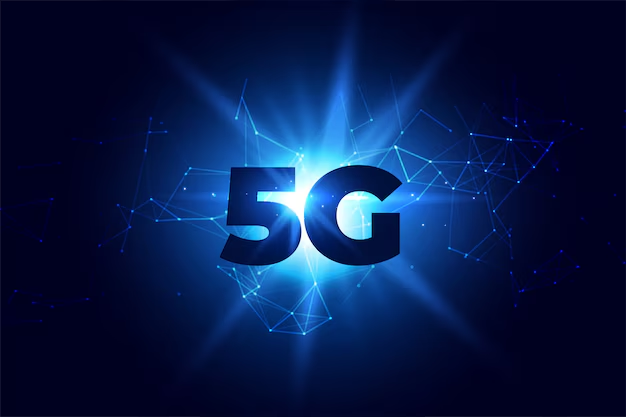The arrival of 5G technology promises to revolutionize industries by offering faster internet speeds, enhanced connectivity, and the potential to support a vast number of connected devices. As businesses continue to adapt to technological advancements, the implementation of 5G networks presents both significant benefits and challenges. In this article, we will explore how 5G technology can impact businesses, as well as the hurdles companies may face as they embrace this next-generation network.
Benefits of 5G Technology for Businesses

1. Faster Data Speeds
One of the most significant advantages of 5G is its unparalleled data speed. While 4G networks can provide speeds of up to 100 Mbps, 5G networks are expected to deliver speeds that are up to 100 times faster. This boost in speed allows businesses to transfer large files quickly, stream high-definition video without buffering, and perform data-intensive tasks with ease. The faster network speeds also make cloud computing and real-time collaboration more efficient, reducing latency and increasing productivity.
2. Lower Latency
Latency refers to the delay between sending and receiving data. With 5G, latency is expected to decrease dramatically, reaching as low as 1 millisecond, compared to 30-50 milliseconds in 4G. This improvement is particularly crucial for industries that rely on real-time communication, such as healthcare, finance, and autonomous vehicles. With low-latency networks, businesses can deliver quicker response times, improve customer experiences, and support applications that require near-instantaneous data exchange.
3. Increased Connectivity and IoT Support
5G networks can handle a much larger volume of connected devices simultaneously compared to 4G. This increased capacity is essential for the Internet of Things (IoT), as businesses continue to deploy smart devices, sensors, and connected systems. From supply chain management to smart factories, 5G will enable more devices to communicate seamlessly, improving efficiency and data collection. For example, manufacturing companies can monitor production lines in real time, detect problems before they escalate, and automate certain processes to reduce human error.
4. Improved Mobile Connectivity
With employees becoming more mobile and relying on smartphones and tablets for work, 5G’s improved mobile connectivity is a game-changer. The higher bandwidth allows employees to access cloud applications, participate in high-quality video conferences, and collaborate remotely with minimal disruption. This enhanced mobile experience supports business continuity and the increasing trend of remote and hybrid work models.
5. Enabling Advanced Technologies
5G technology will be instrumental in the advancement of other cutting-edge technologies, such as artificial intelligence (AI), augmented reality (AR), virtual reality (VR), and autonomous systems. For example, AR and VR applications, which require large amounts of data to function properly, will benefit greatly from the speed and reliability of 5G networks. In sectors like retail, healthcare, and education, businesses can implement immersive experiences that were not feasible with earlier network technologies.
Challenges of 5G Technology for Businesses
1. High Implementation Costs
While 5G offers numerous benefits, the costs associated with its deployment can be high. Businesses must invest in new infrastructure, upgrade hardware, and ensure compatibility with 5G networks. For small and medium-sized enterprises (SMEs), these costs can be prohibitive. The need for specialized equipment and the installation of 5G base stations and antennas also means that companies must allocate substantial resources to integrate 5G into their operations.
2. Security Concerns
As with any new technology, security is a major concern when it comes to 5G. The vast number of connected devices and systems supported by 5G networks increases the potential attack surface for cybercriminals. Businesses will need to implement robust cybersecurity measures to protect sensitive data, ensure the privacy of customers, and secure IoT devices from hacking. The faster speeds and connectivity also mean that any cyberattacks could have a more immediate and widespread impact.
3. Regulatory and Compliance Issues
The rollout of 5G technology is subject to regulatory oversight, which can vary by region. Governments and regulatory bodies will need to develop policies and frameworks to govern the deployment of 5G networks. Businesses must ensure that they comply with these regulations and stay informed about any changes that could affect their operations. Issues related to spectrum allocation, frequency licensing, and data privacy are some of the key regulatory hurdles companies may encounter.
4. Network Coverage and Infrastructure Gaps
Although 5G promises faster speeds and more reliable connectivity, its widespread availability is still limited. 5G requires a denser network of towers and base stations compared to 4G, and in some areas, infrastructure may not yet be in place. Rural and remote regions may experience delays in the rollout of 5G networks, limiting access for businesses that rely on these services. Additionally, companies may need to invest in infrastructure upgrades or partner with telecom providers to ensure full coverage for their operations.
5. Transition and Compatibility Issues
The transition to 5G can create compatibility challenges, especially for businesses with legacy systems or equipment that are not designed to work with 5G technology. Upgrading or replacing outdated hardware can be costly and time-consuming, disrupting daily operations. Businesses must plan carefully for the transition to ensure that existing systems and new 5G infrastructure can work seamlessly together.
Conclusion
5G technology offers numerous advantages that can help businesses become more efficient, agile, and competitive in an increasingly digital world. From faster speeds and lower latency to enhanced connectivity and the ability to support IoT devices, 5G opens up new opportunities for businesses to innovate and transform their operations. However, the challenges associated with 5G, including high costs, security risks, and infrastructure gaps, require careful consideration and planning.
As businesses adopt 5G technology, it’s important to strike a balance between leveraging its potential benefits and addressing the obstacles that may arise. With the right strategies and investments, 5G can become a powerful tool for driving growth, improving customer experiences, and enabling the next generation of business solutions.
FAQs
What are the main benefits of 5G for businesses?
5G offers faster data speeds, lower latency, and increased connectivity for more devices. It supports IoT applications, enhances mobile connectivity, and enables advanced technologies like AI, AR, and VR, all of which can improve business efficiency and innovation.
How does 5G improve business operations?
5G can improve business operations by allowing faster communication, enabling real-time data transfer, and supporting the automation of processes. This results in better productivity, smoother collaboration, and enhanced customer experiences.
What are the challenges businesses face when adopting 5G?
The challenges include high implementation costs, security concerns, regulatory and compliance issues, network coverage gaps, and compatibility issues with legacy systems. Businesses must address these challenges while implementing 5G technology.
Will 5G help remote and hybrid work models?
Yes, 5G improves mobile connectivity, enabling employees to access cloud applications, participate in video conferences, and collaborate remotely without disruptions, making it ideal for remote and hybrid work models.
Is 5G available in all regions?
No, 5G availability is still limited and its rollout is ongoing. Some areas, especially rural or remote regions, may not have access to 5G networks yet. Businesses in these regions may face challenges with connectivity until the infrastructure is expanded.


